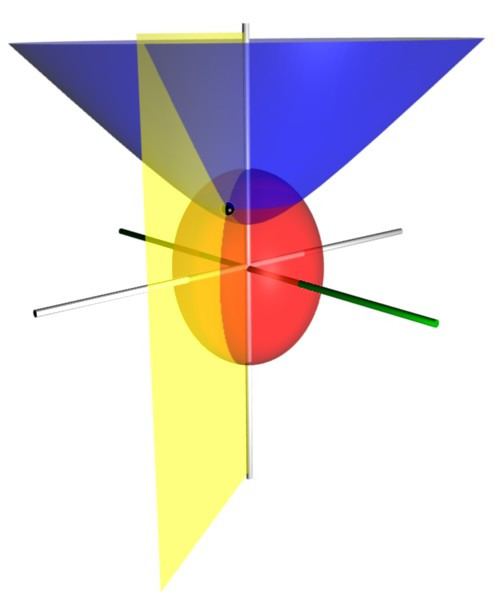 | ||
Prolate spheroidal coordinates are a three-dimensional orthogonal coordinate system that results from rotating the two-dimensional elliptic coordinate system about the focal axis of the ellipse, i.e., the symmetry axis on which the foci are located. Rotation about the other axis produces oblate spheroidal coordinates. Prolate spheroidal coordinates can also be considered as a limiting case of ellipsoidal coordinates in which the two smallest principal axes are equal in length.
Contents
Prolate spheroidal coordinates can be used to solve various partial differential equations in which the boundary conditions match its symmetry and shape, such as solving for a field produced by two centers, which are taken as the foci on the z-axis. One example is solving for the wavefunction of an electron moving in the electromagnetic field of two positively charged nuclei, as in the hydrogen molecular ion, H2+. Another example is solving for the electric field generated by two small electrode tips. Other limiting cases include areas generated by a line segment (μ = 0) or a line with a missing segment (ν=0).
Definition
The most common definition of prolate spheroidal coordinates
where
The trigonometric identity
shows that surfaces of constant
shows that surfaces of constant
The distances from the foci located at
Scale factors
The scale factors for the elliptic coordinates
whereas the azimuthal scale factor equals
Consequently, an infinitesimal volume element equals
and the Laplacian can be written
Other differential operators such as
Alternative definition
An alternative and geometrically intuitive set of prolate spheroidal coordinates
The coordinates
Unlike the analogous oblate spheroidal coordinates, the prolate spheroid coordinates (σ, τ, φ) are not degenerate; in other words, there is a unique, reversible correspondence between them and the Cartesian coordinates
Alternative scale factors
The scale factors for the alternative elliptic coordinates
while the azimuthal scale factor is now
Hence, the infinitesimal volume element becomes
and the Laplacian equals
Other differential operators such as
As is the case with spherical coordinates, Laplace's equation may be solved by the method of separation of variables to yield solutions in the form of prolate spheroidal harmonics, which are convenient to use when boundary conditions are defined on a surface with a constant prolate spheroidal coordinate (See Smythe, 1968).
